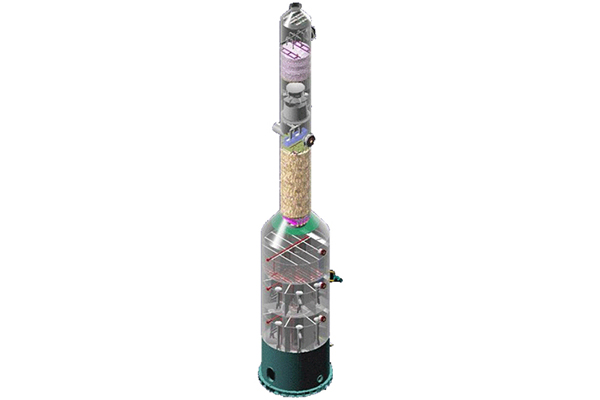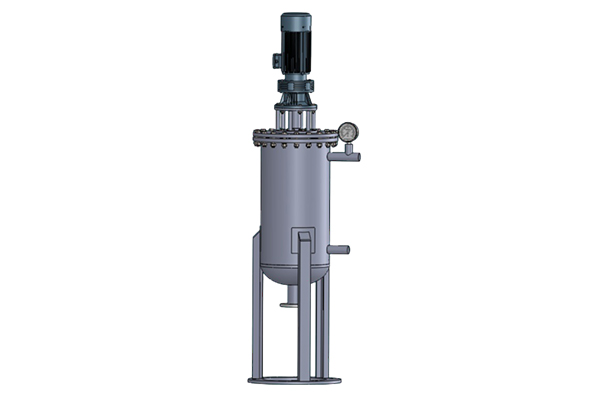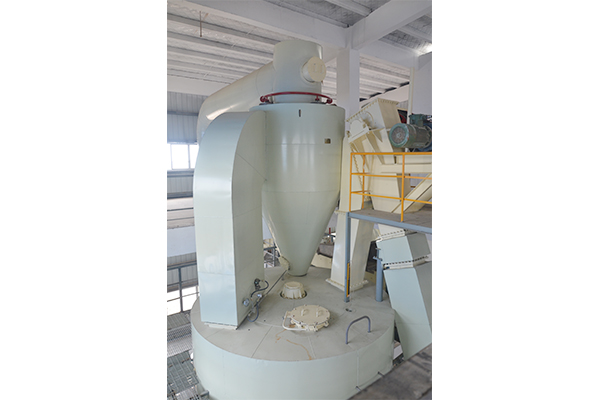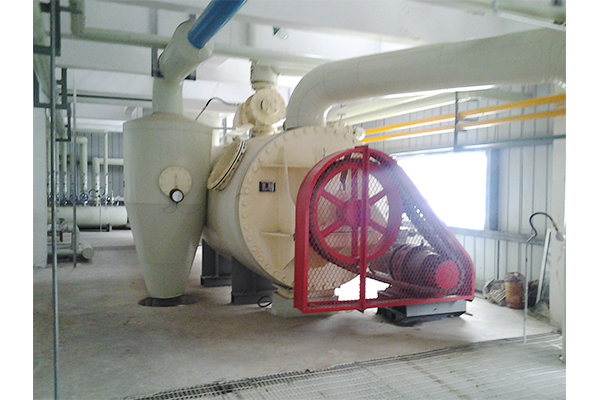How to avoid material blockage and ensure the stability of continuous production when designing the inlet and outlet of an industrial horizontal drum steam frying pan?
Release Time : 2025-07-21
The design of the feed port of the horizontal drum steam frying pan focuses on the smoothness of material flow, and reduces the risk of blockage by optimizing the inclination angle and opening size. The feed port is usually tilted at an angle of 30°-45° to the horizontal plane. This design uses gravity to assist the material to slide down and avoid material accumulation at the entrance. The opening width is determined according to the material particle size and feed amount, which is generally 3-5 times larger than the maximum material particle diameter. At the same time, it is equipped with an adjustable baffle, which can flexibly adjust the opening size according to the material flow in actual production to prevent congestion caused by excessive one-time feeding. In addition, the inner wall of the feed port is made of smooth stainless steel to reduce the friction resistance between the material and the wall, so that the material can quickly enter the drum.
The auxiliary feeding device at the feed port of the horizontal drum steam frying pan is an important guarantee to prevent blockage. Most equipment will install a screw propeller or a vibrating feeder at the feed port. The screw propeller pushes the material into the drum evenly through the rotating blades to avoid accumulation caused by the fast and slow feeding of manual feeding; the vibrating feeder loosens the material through high-frequency vibration to prevent the agglomerated material from blocking the entrance. These devices are linked with the speed of the drum. When the amount of material in the drum reaches the set value, the feeding device will automatically slow down or pause, and resume feeding after the internal material is reduced, forming a dynamic balance to ensure that the feed amount matches the drum processing capacity.
The structural design of the horizontal drum steam frying pan outlet emphasizes the rapid discharge of materials to avoid blockage and secondary heating caused by retention. The outlet is located below the end of the drum and adopts a trumpet-shaped opening design, which gradually expands from the inside to the outside of the drum to reduce the resistance when the material is discharged. An arc-shaped guide plate is installed at the opening to guide the material to fall along a fixed path, prevent the material from splashing and avoid residue at the edge of the outlet. The outlet of some equipment is also equipped with an adjustable gate. The discharge speed is controlled by changing the gate height. When the material accumulation at the outlet is detected, the opening can be increased to speed up the discharge, ensuring that it is consistent with the feed speed and maintaining the rhythm of continuous production.
The anti-sticking design of the horizontal drum steam frying pan outlet is crucial to avoid blockage. Since the material may become sticky due to high temperature during the steaming and frying process, the inner wall of the discharge port will be treated with Teflon coating or mirror polishing to reduce material adhesion. At the same time, some equipment installs a scraper device on the outside of the discharge port. The scraper maintains a small gap with the inner wall of the drum, and scrapes off the attached material synchronously with the rotation of the drum to prevent the accumulation of materials from blocking the outlet after hardening. For materials with high water content, a hot air drying device will be set near the discharge port to reduce the viscosity of the material and avoid agglomeration and blockage caused by moisture.
The sealing design of the inlet and outlet and the drum not only ensures a clean production environment, but also indirectly reduces the hidden danger of blockage. The sealing device usually uses a sealing ring made of flexible high-temperature resistant material, which fits tightly at the connection between the drum and the inlet and outlet to prevent the leakage of steam and dust generated during the steaming and frying process. At the same time, this sealing structure prevents external impurities from entering the equipment to contaminate the material, and also prevents the local cooling and agglomeration of the internal material due to steam leakage, ensuring that the material maintains good fluidity during the entire processing process and reducing blockage caused by changes in the material properties.
The intelligent monitoring and feedback system provides real-time guarantee for the stable operation of the inlet and outlet. The equipment will install material level sensors and blockage detectors at the inlet and outlet. The material level sensor monitors the material accumulation height at the inlet in real time. When it exceeds the set value, it will issue an early warning and automatically adjust the feeding speed. The blockage detector uses sound waves or infrared sensing to determine whether the outlet is unobstructed. Once a blockage is detected, it will immediately trigger an alarm and start the unblocking procedure, such as increasing the vibration frequency or starting a reverse rotating cleaning device. These intelligent functions enable operators to discover problems and deal with them in time to avoid small blockages from developing into major failures that affect production.
The linkage control of the inlet and outlet of the horizontal drum steam frying pan and the drum speed is the core mechanism to ensure the stability of continuous production. The control system of the equipment will automatically adjust the drum speed according to the material flow data of the inlet and outlet. When the feed volume increases, the speed will be appropriately increased to speed up the movement of materials in the drum to avoid internal accumulation; when there is a slight blockage at the outlet, the speed will be reduced to give the material more time to discharge, and the normal speed will be restored after the blockage is removed. This dynamic adjustment forms a closed loop for the entire production process. The three links of feeding, processing and discharging cooperate with each other to ensure that the flow of materials in the equipment always remains stable, fundamentally avoiding blockages caused by unbalanced rhythm and ensuring efficient continuous production.








